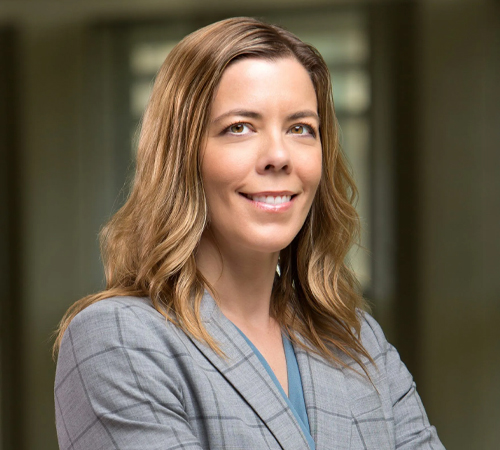Developing Medical Devices to Improve Healthcare for Underserved Populations
Medically underserved populations are disproportionately affected by device-related limitations as well as complex, time- and cost-intensive clinical devices globally. They include a population of individuals living within geographical areas with high levels of poverty, high infant mortality rates, lack of primary care providers and a large elderly population. Women and paediatric patients are also significant members of these populations and are often neglected in medical device research. Dr Grunlan’s research sits at the intersection of engineering and healthcare for medically underserved populations. She is dedicated to developing polymeric medical devices that improve healthcare outcomes for every patient. By focusing on applying innovative healthcare devices in orthopaedics, gynaecology, ophthalmics, and diabetes, Dr Grunlan believes her research is providing an opportunity to understand and mitigate unmet clinical needs and challenges amongst medically underserved populations.

A Career Dedicated to Biomedical Engineering
Dr Grunlan earned her Doctorate in Chemistry from the University of Southern California in 2004 after working as a senior chemist at H.B. Fuller Company in Minnesota. Over the years, she has authored 103 peer-reviewed journal publications on biomedical engineering, has four issued patents with four more pending and has delivered more than 100 invited lectures all around the world.
“Through the engagement afforded by the DIA program, my collaborators and I are able to cultivate work that applies machine learning (ML) to develop polymeric medical devices, and to share these efforts with a broader scientific community.”
Dr Grunlan is a full professor in biomedical engineering at Texas A&M University, USA, where she is primarily focusing on the development of self-fitting bone tissue scaffolds to heal complex bone defects. Her contributions to the fields of biomedical engineering have been recognized as a Fellow of the Biomedical Engineering Society (BMES), the American Institute for Medical and Biological Engineering (AIMBE), the American Chemical Society (ACS), and the ACS Polymeric Materials: Science & Engineering (PMSE) Division. She is also a Senior Member of the National Academy of Inventors (NAI).
Dr Grunlan’s project, supported by DIA, focuses on using AI and machine learning to develop medical devices that improve healthcare outcomes for all patients. The project aims to achieve innovations in regenerative engineering and device design that offer clinical applications for treating bone and muscle deformities, eye defects, diabetes, and other diseases specific to women, children and elderly populations.
Dr Grunlan believes that regenerative engineering - an emerging biomedical field that focuses on tissue regeneration and repair to treat a wide range of diseases and injuries - is a promising alternative to existing biological devices that are often expensive and impractical in trauma scenarios. Collaborating with Dr Adam Celiz from the Imperial College London, Dr Grunlan is integrating AI and machine learning to develop polymeric medical devices, such as self-fitting bone tissue scaffolds, to heal complex bone defects. Her research seeks to develop an “off-the-shelf” surgical product that can be readily used with patient populations.
Advancing Collaborations to Improve Health Outcomes for Everyone
Dr Grunlan believes that interactions between polymer science and machine learning experts can revolutionise the development of medical devices, improving health outcomes for all. She is working on advancing collaborations with experts in the requisite areas to cultivate work that applies machine learning (ML) to develop polymeric medical devices for healing diseases specific to women, children and elderly populations. She also plans to participate in scientific meetings and workshops in the USA and the UK focused on healthcare innovations, for example, the UK Bioengineering Society Meeting, the MedTech at Imperial College and the London Functional Materials Conference. These interactions will initially be in the context of developing a self-fitting scaffold device to heal bone defects. Subsequently, Dr Grunlan plans to promote the resulting interactions and innovations to a broader scientific community.
Related content
DIA awardees
Distinguished International Associates (DIA) are international engineers working across all sectors. They work at the c…
FAQ
Information and answers to common queries about the Distinguished International Associates (DIA) Programme
